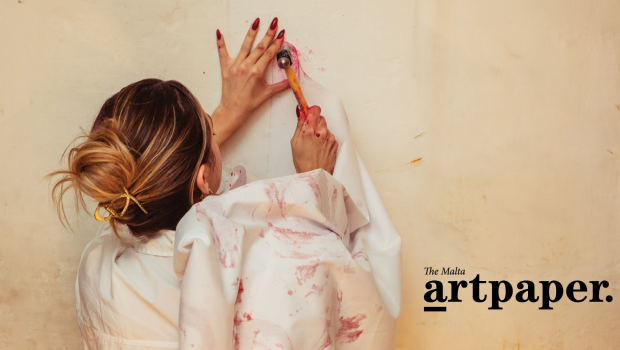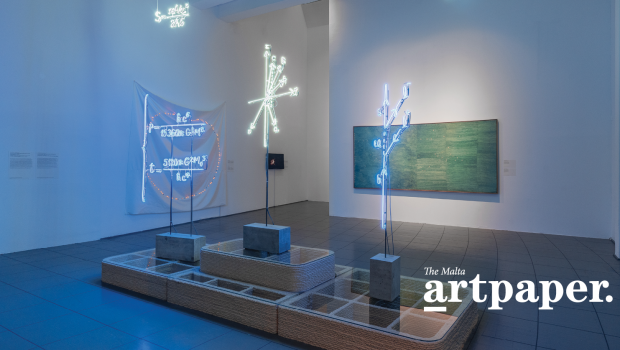Hungry for Art
Let’s think outside the virus.

Did we kill the arts? Or rather, has art succumbed to the pandemic? If one Googles ‘is art dead?’, one will find articles with that title written in every month, in every year since the birth of online publishing. So, seeing that Homo sapiens’ highest achievement continues to die and be magically resurrected, I don’t think it is able to be properly murdered by a spiky ball of viral material.
It is said that art never comes from happiness – which probably means art historians and critics are never happy and can never be, hence the ridiculous number of ‘art is dead’ articles. Perhaps we can also agree that, seemingly and supposedly, the more oppressive life becomes for the artist, the more art she produces. So, is Covid-19 going to save the arts? Or will it signify the death of an era? Will it continue to bury the struggling artist, or will it filter out the talent from the ego? And how can we direct society to make sure we have the best outcome?
Take literature for instance. Writers have been complaining for decades about the lack of book sales. I myself was thinking – should I write this? Is anyone reading? Was anyone reading before Covid? My friends don’t even read this. Let alone the general public. And when they do, they read the heavily edited material, the stuff the publishers want content writers to write. To fill the pages. To attract advertisers.
Then Covid happened. Did people read much before? No. They are probably reading less now, although book sales did allegedly increase during lockdown. Audio book sales are on the rise, although I can’t get this newfound habit of dismissing the written word. I myself have often sent my pieces to friends before sending to print, only to find out months later they didn’t read my stuff. And the rest of the genres we call ‘art’ are the same. They suffer from the growing malaise of attention deficit disorder that is severely afflicting modern society. Their work is lost in a sea of attention grabbing, advertiser-monitored flashes of colour and noise. Their efforts diluted and filtered by the big money special effects. Their intentions and passions nullified too often.
But perhaps, even though during this period of forced social distancing and event restriction, most consumers probably played more background music at home (seeing as they couldn’t go to bars, cafes and clubs and festivals) and people possibly looked at the stuff they chose to hang on their walls more (because they didn’t go to restaurants with commercial art hanging on their walls, and they certainly didn’t go to galleries), and they still thought art was useless. In fact, during lockdown, a meme was circulated citing a poll which identified artists as the least essential professionals.
Least essential. Useless. Or perhaps people consider art a useless luxury? The people who think art is an unaffordable useless luxury are most probably the ones who will listen to music all the time, watch Netflix, hang prints on the wall without bothering to know the name of the original artist, and order fake designer items on Alibaba. Perhaps the role of the artist is simply not communicated well. And if the majority are unaware of your existence these days, you might as well not exist.
But ‘It’s like our future has gone’: visual artists facing existential threat post Covid-19’; says a headline on The Guardian discussing Australian arts in focus. “Artists tend to be solitary creatures anyhow – so in that sense working has not changed much”. It claims. Time will tell if artists produce more or not. But how many artists can continue to produce if they can’t physically afford to?
Although some online art sales have doubled, locally in terms of exposure and sales it is as though artists have but vanished; like they have lost their raison d’être. Or returned to square one. Back to the days when they first came out of art school or the conservatory, or the day they quit their full time job to embark on trying to be an artist full time. The collective energy of the live orchestra has been missing for too long, and although my life personally was made more precious by the many hours of double bass practice happening in one of the rooms of my house, I can’t imagine national orchestra employees or dance company members’ being very inspired after all these months of solitude.
I often ask myself these days if this is life, is it worth preserving?
Small galleries, which is all we have here were already struggling. The wealthy cannot travel, and the efforts of the passionate promoters of the often too-hard-to-figure contemporary works have been thrown back into deep abysses.
But, if we struggle to understand the deep hibernation contemporary art seems to be in, we cannot just criticise the consumer. We must criticise the complacent artist too. So even if the virus will certainly not kill art, has it inflicted the artist?
The art that survives is the one which best represents the time in which it was produced. You switch on Netflix and you find no one with a face mask on. We must be patient, obviously. I have heard that there is hardly a single recently pitched upcoming newly produced film, theatre piece or performance piece which does not involve some form of mask wearing.
What are artists trying to do? I want to make a case for something with everything I write. I believe artists want to do just that, no matter their medium. They are not simply producing work merely to be productive and mark their territory. If this is the case, then in this Covid infested year we should be looking forward to some incredible material.
And in the meantime, can all art go virtual? No. How can it? I myself never thought I would miss the energy of a room full of people this much. And in my hunger for art, I did find some morsels.
ZfinMalta Malta’s national dance company produced Aħna, a dance film, choreographed by Paolo Mangiola, directed by award-winning director and filmmaker, James Vernon, and performed by the company dancers. The work, distributed mainly via social media, evoked a feeling of togetherness, set in a Maltese Quarry. James Vernon with Sergio Laferla also created a short film showing Sergio voguing on a typical Maltese roofscape. It was for me a mix of nostalgia, truth, beauty and activism.

I fell in love with the work of Alessio Cuschieri, especially his pieces in Agħti Kbir Alla, a show at Spazju Kreattiv cut short by the lockdown, which explored themes such as over-development and the cult-like attitudes of the construction industry in Malta. Alessio worked on some incredible commissions in between furthering his studies in the period and delivered beyond expectations.
Blitz, directed by Alexandra Pace with the valuable curaturship skills of Sara Dolfi Agostini turned all virtual – hosting events such as Laure Prouvost’s online exhibition The Eye of The Storm and offering for sale Nico Vascellari’s flag #InDarkTimesWeMustDreamWithOpenEyes – very fitting works for the times.
These little tastes of the product of the artist’s mind kept me going through this dark time.
I once asked my father ‘what were they thinking?’, in response to something that my country had done. He replied, ‘why did you assume they were thinking?’.
Perhaps one of the roles of the artist is to think for society. They think in ways few of us can. Artists don’t only think in languages, they think with all their senses or perhaps transcribe what they’re thinking in a way which other senses can perceive.
I feel when a society does not respect its artists it is refusing the thought process. It is refusing to see, hear and feel the combined reactions to complex thought. It is refusing to think.
And feel.
How are we going to kickstart all this back on? We must first understand that we need art. Even the smallest, least educated of us crave art. But we must also be willing to support its creation.
And while the British government put out an advert which seemed to suggest that artists, dancers and performers should be re-trained to work in other, perhaps more useful professions such as the allusive ‘tech’ industries, Arts Council Malta set up its Transition Arts Task Force to mitigate current circumstances by establishing camaraderie networks and knowledge-sharing, as new realities emerge in which artistic practices can develop.
Why didn’t we have more commissions for public sculpture and more open air public performances? Is it because they draw too many crowds? Or did we just oversee the role of artists?
If there was a time to valorise art and culture, it would be now. If there was a time for the state to pay for art, it would be now. If the authorities wanted to boost morale, they would push for art to be streamed on national broadcasting channels. They would want to showcase all the contemporary culture that has been funded in recent years. They should do their best to reignite faith in their long-term vision if there is one. They would strive to counteract all the psychologically draining issues surrounding society right now with beauty. With art.










